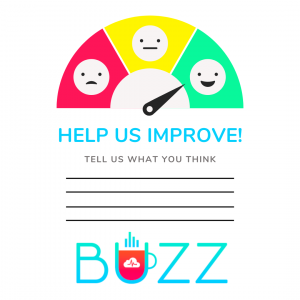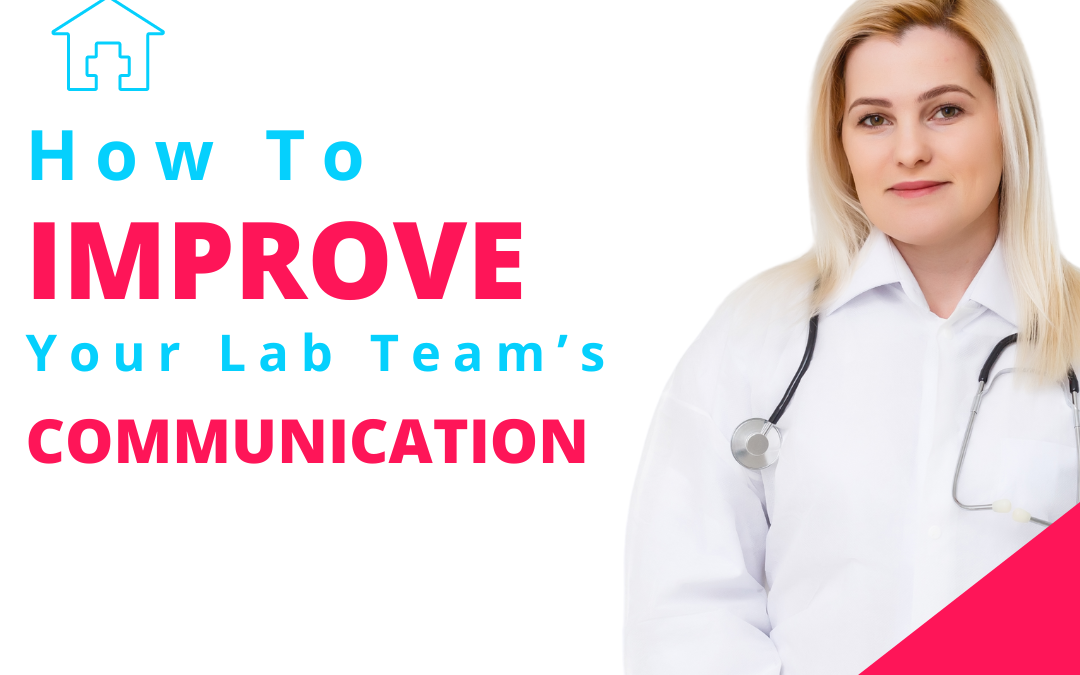Improving communication within a lab team is essential for fostering collaboration, efficiency, and overall success. Here are some strategies to enhance communication within your lab team:
Establish Clear Goals and Objectives: Clearly define the goals and objectives of your lab projects. This helps team members understand the overall purpose and direction, making communication more focused and meaningful.
Regular Team Meetings:
Schedule regular team meetings to discuss project updates, challenges, and goals. This provides an opportunity for open communication, collaboration, and ensures everyone is on the same page.
The agenda for lab team meetings will depend on the nature of your research, the goals of your team, and the current stage of your projects. However, here are some general topics that are commonly discussed in lab team meetings:
Project Updates:
- Progress made since the last meeting.
- Milestones achieved and any challenges faced.
- Results obtained and their implications.
- Experimental Design and Methodology:
- Discussion of experimental protocols and methodologies.
- Troubleshooting any issues encountered during experiments.
- Planning for upcoming experiments and adjusting protocols as needed.
Data Analysis:
- Review and analysis of data collected.
- Interpretation of results and potential implications.
- Identification of trends, patterns, or anomalies.
Literature Review:
Discussion of relevant research articles or publications: Engaging in discussions about relevant research articles or publications is a crucial aspect of staying informed and fostering intellectual growth within a field. This practice involves critically analyzing and understanding the methodologies, findings, and implications of studies conducted by other researchers. By actively participating in these discussions, individuals can gain new perspectives, identify gaps in existing knowledge, and contribute to the ongoing discourse in their field.
Exploration of new methodologies or techniques in the field: The continuous evolution of scientific and academic fields demands a proactive approach to exploring new methodologies and techniques. Researchers and professionals should actively seek out and evaluate innovative approaches that have the potential to enhance the efficiency and effectiveness of their work. This exploration may involve attending conferences, workshops, or webinars, as well as reading cutting-edge literature and collaborating with experts who specialize in emerging methods.
Staying updated on recent advancements and their potential impact on your work: Remaining current with the latest advancements is essential for professionals and researchers to adapt to the ever-changing landscape of their respective fields. This involves monitoring industry journals, subscribing to newsletters, and participating in relevant online communities. Understanding the potential impact of these advancements on your work allows for informed decision-making, the incorporation of new technologies, and the ability to anticipate and address emerging challenges.
Collaboration and Coordination: Collaboration is a cornerstone of progress in many fields. Establishing partnerships and fostering collaboration with colleagues, experts, and other stakeholders can lead to more comprehensive and impactful research outcomes. Effective coordination among team members ensures that everyone is aligned with project goals, deadlines are met, and resources are utilized efficiently. This collaborative approach not only enhances the quality of work but also promotes knowledge exchange and interdisciplinary insights.
In summary, a commitment to discussing research, exploring new methodologies, staying updated on advancements, and fostering collaboration are integral components of a thriving and dynamic professional or academic environment. These practices contribute to the continuous improvement of individual skills, the advancement of knowledge within a field, and the development of innovative solutions to complex problems.
Problem Solving:
- Addressing any challenges or roadblocks faced by team members.
- Brainstorming solutions and seeking input from the group.
Planning and Scheduling:
- Setting short-term and long-term goals.
- Establishing deadlines and timelines for specific tasks.
- Allocating resources effectively.
- Communication and Documentation:
- Ensuring that everyone is informed about changes, updates, and decisions.
- Documenting experimental procedures, results, and any modifications made.
- Training and Skill Development:
- Providing opportunities for team members to share new skills or knowledge.
- Identifying training needs and planning for professional development.
Lab Logistics:
In the realm of laboratory management, meticulous attention to certain key aspects is paramount to ensuring seamless operations and the successful pursuit of scientific endeavors. Three critical components demand particular focus: inventory management, equipment maintenance, and future planning.
First and foremost, the efficient handling of inventory is indispensable for the uninterrupted flow of research activities. Regular updates on supplies, precise tracking of consumables, and strategic ordering are essential to prevent delays and maintain an optimal working environment. By implementing a robust inventory management system, a laboratory ensures that researchers have access to the necessary tools and materials, thereby enhancing productivity and preventing unnecessary disruptions.
Equally vital is the maintenance and scheduling of laboratory equipment. A proactive approach to equipment upkeep not only extends the lifespan of valuable assets but also minimizes the risk of unexpected malfunctions that could impede experiments. Establishing a routine maintenance schedule, conducting regular inspections, and promptly addressing any issues contribute to a reliable laboratory infrastructure.
Looking towards the future, a comprehensive plan for research direction and project development is imperative. Lab meetings serve as a forum for discussing the trajectory of ongoing research and identifying potential avenues for future projects. Deliberations should encompass not only current findings but also strategic foresight into the lab’s long-term goals and contributions to the scientific community.
Simultaneously, these meetings provide an opportunity to pinpoint areas for improvement and optimization. Identifying bottlenecks, refining methodologies, and embracing technological advancements are integral to maintaining the competitiveness and relevance of the research conducted within the laboratory.
It is crucial to tailor the agenda of these meetings to the specific needs of the lab, adapting it as necessary based on evolving priorities. Flexibility is key in accommodating the dynamic nature of scientific research, allowing the lab to pivot and capitalize on emerging opportunities or address unforeseen challenges.
Moreover, fostering open communication and creating a collaborative and supportive atmosphere within the team are prerequisites for successful lab meetings. Encouraging active participation, constructive feedback, and the exchange of ideas cultivates a culture of innovation and continuous improvement.
In summary, the triumvirate of inventory management, equipment maintenance, and future planning form the bedrock of effective laboratory management. Through a meticulous approach to these aspects, laboratories can not only maintain operational excellence but also position themselves at the forefront of scientific discovery and innovation.
Utilize Collaboration Tools:
In the quest for optimized laboratory operations, incorporating digital collaboration tools becomes a pivotal strategy, and Buzz by Skyscape stands out as an integral component within this application ecosystem. By seamlessly integrating with project management software, shared document platforms, and widely-used communication channels like Slack or Microsoft Teams, Buzz elevates the collaborative capabilities of lab teams to new heights. This integration not only aligns with modern workplace dynamics but also accentuates the efficiency and coherence of team interactions.
The utilization of project management software within the Buzz application provides lab teams with a centralized hub for task organization, progress tracking, and deadline management. This feature enhances project visibility, allowing team members to stay informed about ongoing tasks and milestones. The result is a more streamlined workflow, with collaborative efforts orchestrated with precision, even in remote work scenarios.
Furthermore, Buzz enables seamless communication through its integration with popular platforms like Slack or Microsoft Teams. These channels serve as dynamic communication hubs, fostering real-time discussions and information sharing. Team members can exchange updates, share insights, and engage in collaborative problem-solving with the convenience of a unified platform. This not only accelerates decision-making processes but also contributes to the overall agility of the lab team, crucial in the fast-paced and dynamic landscape of scientific research.
The shared document platforms integrated into Buzz enhance collaborative data sharing and access. Whether it’s research findings, experimental data, or procedural documents, lab teams can seamlessly collaborate on shared documents within the application. This not only centralizes critical information but also ensures version control, eliminating the risks associated with data discrepancies.
In conclusion, Buzz by Skyscape, as an integral part of the application ecosystem, optimally utilizes collaboration tools to elevate the efficiency of lab teams. The seamless integration with project management software, shared document platforms, and communication channels provides a comprehensive and cohesive platform for real-time communication, task management, and collaborative document editing. This multifaceted approach empowers lab teams to navigate the complexities of scientific research with precision and agility, fostering a culture of innovation and excellence within the laboratory environment.
Encourage Open Communication:
Foster a culture of open communication where team members feel comfortable sharing their ideas, concerns, and feedback. Encourage questions and be open to different perspectives.
To foster open communication within your lab team, cultivate a culture that values transparency and collaboration. Encourage regular team meetings, where all members can share insights, challenges, and ideas. Establish an open-door policy, making it clear that team members can approach you with questions or concerns. Utilize communication tools and platforms to facilitate real-time exchanges and provide a space for sharing updates or achievements. Actively listen to your team, acknowledge their contributions, and create an environment where diverse perspectives are appreciated. Regularly seek feedback and demonstrate a willingness to address issues promptly. By promoting a culture of open communication, you empower your lab team to collaborate effectively and contribute to a positive and productive work environment.
Clarify Roles and Responsibilities:
Precise delineation of roles and responsibilities is paramount for the efficient functioning of a team. Clearly defining each team member’s role establishes a framework that minimizes ambiguity, enhances accountability, and fosters a collaborative work environment. By outlining specific tasks and expectations, individuals gain a comprehensive understanding of their contributions to the team’s overall objectives. This clarity mitigates the risk of misunderstandings, overlapping responsibilities, or tasks falling through the cracks.
When roles are well-defined, team members can align their efforts with organizational goals, making the workflow more streamlined and effective. Additionally, it facilitates better coordination among team members, enabling them to leverage their unique strengths and expertise. This not only enhances individual job satisfaction but also contributes to the team’s overall success.
Regular communication about roles and responsibilities ensures that everyone stays informed about any changes or updates. This transparency promotes a sense of ownership and accountability within the team. As a result, team members are more likely to proactively address challenges, collaborate on projects, and contribute to a positive and productive team dynamic. Clear role definition is an essential component of organizational success, fostering a structured and collaborative environment that allows each team member to thrive in their designated capacities.
Provide Training:
Implementing training programs for effective communication skills is a strategic initiative that can significantly enhance team dynamics and overall organizational success. These training sessions encompass a range of crucial skills, encompassing both written and verbal communication.
Workshops focused on active listening equip team members with the ability to attentively understand and respond to colleagues. This skill fosters a culture of empathy and comprehension within the team, promoting more meaningful interactions. Additionally, training in giving constructive feedback empowers team members to provide valuable insights in a manner that encourages growth rather than discouragement. Constructive feedback sessions contribute to a positive work environment, where continuous improvement is valued.
Effective email communication is a vital aspect of modern workplaces. Providing training in this area ensures that team members convey their messages clearly and professionally. This includes guidance on tone, clarity, and the organization of information within emails. Enhanced email communication skills not only prevent misunderstandings but also contribute to a more efficient and collaborative work environment.
These training initiatives should be tailored to the specific needs of the team and regularly updated to address evolving communication challenges. By investing in these skills, organizations empower their teams to navigate complex communication scenarios with confidence, ultimately fostering a culture of clear, respectful, and impactful communication.
Create a Positive Team Environment:
Foster a positive and supportive team culture. When team members feel valued and respected, they are more likely to communicate openly and collaborate effectively.
Establishing a positive team environment is a fundamental cornerstone for cultivating a thriving workplace, where individuals are not only motivated but also empowered to contribute their best efforts. The creation of such an environment hinges upon fostering a culture that values and supports each team member. When individuals within a team feel genuinely appreciated and respected, the ripple effects are profound, contributing to enhanced communication, heightened collaboration, and ultimately, increased overall productivity.
A key element in fostering a positive team culture is recognizing and acknowledging the unique strengths and contributions of each team member. By highlighting individual accomplishments and expressing appreciation for the diverse skills that each member brings to the table, a sense of value and importance is instilled. This, in turn, fosters a positive atmosphere where team members feel seen and recognized for their distinct capabilities, creating a foundation for mutual respect.
Moreover, an environment that encourages open communication is pivotal. When team members feel comfortable expressing their thoughts, ideas, and concerns without fear of judgment, it facilitates a free flow of information. This openness is the lifeblood of effective collaboration, as it allows for the sharing of insights, problem-solving, and the co-creation of innovative solutions. Establishing clear channels for communication and promoting active listening further reinforces this culture of openness, creating a space where every team member’s voice is valued.
Team-building activities and initiatives geared towards strengthening interpersonal relationships can also play a crucial role in fostering a positive team environment. These activities go beyond the confines of professional roles, allowing team members to connect on a personal level. This camaraderie not only enhances the overall working dynamic but also establishes a foundation of trust and solidarity.
In essence, the creation of a positive team environment is a multifaceted endeavor. It involves recognizing individual contributions, promoting open communication, and nurturing a sense of camaraderie among team members. When these elements are thoughtfully integrated into the team culture, the result is a workplace where individuals feel valued, respected, and motivated to collaborate effectively towards shared goals. This not only enhances the work experience for each team member but also contributes to the collective success and achievements of the team as a whole.
Use Visual Aids:
Incorporate visual aids such as charts, diagrams, and presentations to convey complex information. Visuals can enhance understanding and make communication more effective, especially in scientific and technical fields.
Implement a Feedback System:

Establish a feedback system where team members can provide input on processes, workflows, and collaboration. Regular feedback sessions can lead to continuous improvement in communication and team dynamics.
Implementing a Feedback System within a team is a strategic and proactive approach to enhancing overall efficiency and effectiveness in the workplace. This structured mechanism provides team members with a platform to share their insights, opinions, and suggestions, thereby fostering an environment of continuous improvement. Through regular feedback sessions, various aspects of processes, workflows, and collaboration can be scrutinized, leading to refinement and optimization.
One of the primary advantages of a feedback system is its ability to address potential bottlenecks in processes. By encouraging team members to share their perspectives on existing workflows, the organization gains valuable insights into any challenges or inefficiencies that may impede progress. This insight serves as a foundation for strategic decision-making, allowing for adjustments to be made promptly, resulting in smoother and more streamlined operations.
Moreover, the establishment of a feedback system contributes to the enhancement of communication within the team. By providing a structured avenue for team members to express their thoughts and concerns, it promotes transparency and openness. This, in turn, helps in mitigating misunderstandings and ensures that everyone is on the same page regarding project objectives and expectations.
Collaboration is another area that stands to benefit significantly from a well-implemented feedback system. By soliciting input on collaborative efforts, the team can identify strengths and weaknesses in their teamwork dynamics. This information allows for targeted interventions, such as additional training or team-building exercises, fostering a more cohesive and productive working environment.
Regularity is a key component of an effective feedback system. Scheduled feedback sessions, whether they occur weekly, bi-weekly, or monthly, provide a consistent platform for team members to voice their opinions. This predictability ensures that issues are addressed in a timely manner, preventing the accumulation of challenges that could potentially hinder productivity.
To implement a feedback system successfully, it’s essential to establish clear guidelines and ensure that the process is constructive and non-confrontational. Constructive feedback focuses on specific behaviors or processes, providing actionable insights for improvement. This approach creates a positive atmosphere where team members feel empowered to contribute to the collective growth of the team.
In conclusion, the implementation of a feedback system is a strategic initiative that can significantly contribute to continuous improvement in communication and team dynamics. By actively seeking and incorporating input from team members, organizations can adapt and evolve, fostering a culture of responsiveness, collaboration, and ongoing excellence in their operations.
Address Conflict Promptly:
If conflicts arise, address them promptly and constructively. Establish a process for resolving disagreements and encourage open communication to prevent lingering issues from affecting the team’s dynamics.
Celebrate Achievements:
Acknowledge and celebrate the team’s achievements, both big and small. Recognizing success boosts morale and encourages a positive atmosphere, fostering better communication.
Celebrating achievements within your lab team is an essential component of fostering a positive and productive work atmosphere. By acknowledging both significant milestones and smaller triumphs, you not only elevate team morale but also enhance overall communication and collaboration. Recognizing individual and collective efforts during lab meetings or through written announcements provides team members with a sense of validation and appreciation. Moreover, showcasing your team’s success at conferences or through publications not only acknowledges the hard work internally but also contributes to the broader scientific community, establishing a reputation for your lab’s accomplishments.
Practical strategies for celebration include organizing team-building events to strengthen bonds, tailoring recognition efforts to individual preferences, and implementing incentive programs or small rewards. Establishing rituals around celebrating achievements creates a positive culture, fostering an environment where successes are acknowledged and celebrated. Continuous feedback loops ensure that these celebration efforts align with the evolving needs and preferences of the team, contributing to a culture of mutual respect and motivation that propels the lab towards sustained success.
Remote Communication Strategies:
Buzz by Skyscape emerges as a HIPAA-compliant messaging app tailored to meet the unique communication challenges faced by lab teams, particularly in the realm of remote collaboration. In adherence to the rigorous standards set by the Health Insurance Portability and Accountability Act (HIPAA), Buzz ensures the secure exchange of sensitive information, alleviating legal risks associated with data privacy. The app’s user-friendly interface facilitates seamless communication, allowing lab teams to share critical updates, project details, and research findings with confidence, irrespective of their physical locations. Robust encryption protocols safeguard messages from unauthorized access, and real-time messaging features ensure prompt responses to queries, enhancing the overall agility and responsiveness of lab teams.
Beyond its commitment to security and user-friendly design, Buzz by Skyscape caters specifically to the needs of lab professionals. The app’s file-sharing capabilities streamline the exchange of documents and data, promoting centralized information access. This proves invaluable in a dynamic research environment, where efficiency and accessibility are paramount. With Buzz, lab teams can uphold the highest standards of data privacy, collaborate effectively, and maintain a cohesive workflow, whether they are working within the confines of a physical laboratory or engaging in remote collaboration.
By implementing these strategies, you can create a more communicative and collaborative lab team, leading to increased productivity and success in your projects.


